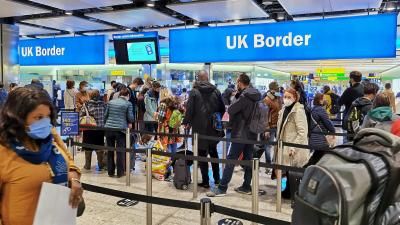Migrant women are especially vulnerable to violence and harassment at work
This page is approximately a 3 minute read
This page was published on

The World Risk Poll reveals that globally three in ten (30%) migrant women say they have experienced violence and harassment at work, compared with two in five women (21%) working in their country of birth.
The gap between women who are migrants and those that are working in the country they were born in is largest in the poorest 20% of the global population at 12 percentage points, compared to seven percentage points in the wealthiest 20%. While there is a difference between the poorest and wealthiest groups, the gap is present across all income groups.
Discrimination based on nationality or ethnic group also plays a role in the Poll findings. 68% of migrant women in the poorest income groups who experienced discrimination based on their skin colour say they have experienced violence and harassment. This is compared to 24% for those who had not experienced discrimination.
Safe at Work? Global experiences of violence and harassment
Read the reportReporting experiences of violence and harassment
While migrant women are more likely to experience violence or harassment, they are slightly less likely than native-born women to tell anyone about their experience. Overall, 61% of native-born women told someone about their experience of violence and harassment, compared to 57% of migrant women.
Migrant women who did not tell anyone about their experience were more likely than native-born women to say this was due to ‘not knowing what to do’ (51% vs 46%) or the ‘procedures at work being unclear’ (60% vs 41%), suggesting a clear area of improvement for employers.
Who they choose to confide in also differs. When asked who they would tell about their experience, it’s clear that migrant women have a different support network to native-born women. The majority of migrant women say they would tell either their employer or a co-worker, while the majority of native-born women say they would tell a friend or family member.
These findings not only highlight that an important support network isn’t accessible for migrant women, but it also identifies key differences between the two groups. It’s important that policymakers and employers consider these variations when developing reporting pathways and processes for those experiencing violence and harassment in the workplace.
Dr. Sarah Cumbers Former Director of Evidence and Insight, Lloyd’s Register Foundation
The World Risk Poll highlights a number of groups particularly vulnerable to violence and harassment in the workplace, many of which are female. The findings suggest clear paths to action, such as employers making these people have consistent, clearly communicated reporting pathways to follow.

Education plays a role in women reporting violence and harassment
Collectively women – whether they are migrants or native-born – are significantly more likely to tell someone about their experience if they are educated to university (tertiary) level, with 72% of women educated to this level who experienced violence and harassment saying they told someone. This percentage drops to 60% for those with a secondary-level education and even further, to 38% for those with a primary-level education.
For those women who didn’t report their experience of violence and harassment, the Poll finds that the reason also varies based on education level. Women with a primary-level education were significantly more concerned about ‘people at work finding out’ (57%) and ‘fear for their reputation’ (53%) than those with either a secondary or tertiary level of education. The main reason women with a tertiary level education gave for not telling someone about their experience was that they thought it was a ‘waste of time’ (51%).
Migrant women’s experience of violence and harassment at work
Have you, personally, ever experienced (physical/psychological/sexual) violence and/or harassment at work?
Download the report

Safe at work? Global experiences of violence and harassment
This report explores individual experiences across countries and demographics around the world. It provides insight for regulators, businesses, governments, communities, and researchers to help them develop relevant policies to prevent harassment. (PDF, 4.73MB)
